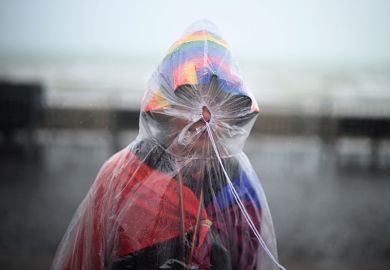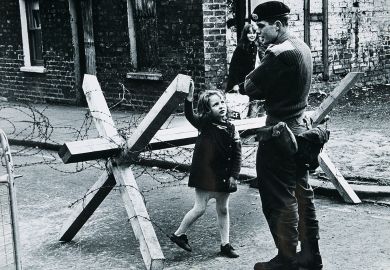Given the grow-ing number of commemorative publications, encyclopaedias and sundry com-pilations, not a few of which have proved to be disappointing in content, poor in organisation and deficient in quality, it was with reservation and misgivings that I approached this companion, which advertises itself on the dust-jacket as "the only reference to cover ALL aspects of the second world war". Initial relief came quickly enough with an inspection of the names and qualifications of the 144 contributors, nothing less than a roll-call of national and international authorities whose reputations for reliable and original scholarship have long been established and their qualities widely recognised.
What should be said at the outset is that the general editor, I.C. B. Dear, the consultant editor, M.R.D. Foot, and presumably the publishers have allowed the contributors to write at proper length, where appropriate, on their given topic so that in many instances, on major themes the entries amount to substantial studies complete with a relevant bibliography. That is in such comfortable contrast with the snippets and compressions too common elsewhere.
Perhaps the most purposeful way to approach this volume and to evaluate its potential utility for the general reader and specialist alike is to consider it as several books in one. The first might be called "the world at war": combatants large and small together with the neutral states comprising a gamut of studies which runs through the entire alphabet from Abyssinia to Yugoslavia. The significant combatants, beginning with Australia, each have a substantial chapter to themselves, with a boxed table of contents at the head of the study which greatly facilitates access to the data and to the analysis. After an introduction, useful for background, the coverage begins with "domestic life, war effort and the economy", the governmental apparatus, defence and armed forces, intelligence, merchant marine and culture.
All of these studies, many of them very lengthy, are plentifully supplied with statistical data and references, including a bibliography at the end. What is singular to all of these contributions is the inclusion of a separate sub section on intelligence for each major combatant, in addition to the wider discussions of "the field of intelligence, broadly considered, to include deception, sabotage and escape" distributed throughout the volume. The studies on ULTRA by Ralph Bennett for the United Kingdom and Waldo Heinrichs for the United States are outstanding examples, together with John Chapman's comprehensive and original essay on SIGINT, signals intelligence warfare, embracing both combatants and neutrals, principally the Swiss and the Swedes.
The second great compilation of material obviously and essentially deals with land, sea and air warfare: the great campaigns across the globe, individual battles and the commanders most closely associated with them. In this context it is worth noting that there are separate, detailed profiles of war leaders, Churchill, Hitler, Mussolini, Stalin, Roosevelt, though I could find none specifically identified for Japan. Strategic air offensives are covered in great detail: against Germany by Noble Frankland, outside Germany by Stanley L. Falk, to be read in conjunction with the long essay on air power by Denis Richards. Richard Hough presents a corresponding perspective on sea power, a useful introduction to the separate studies of great naval engagements. Marc Milner surveys the battle of the Atlantic, ending in curiously enigmatic style, questioning whether or not "war losses of shipping materially affected the course of the war". I assume that he thinks they did not. On land campaigns and battles in Europe, the Middle East, Asia and the Pacific receive magnificent coverage, plentifully supplied with maps. Earl Ziemke presents comprehensive operational narratives of the giant encounters on the Soviet-German front, complete with order of battle tables, though perhaps the addition of operational analysis, particularly of Red Army operations, by David Glantz would have further enhanced these passages.
A third dimension to the book gives details of military technology and weapons: anti-submarine warfare, anti-tank weapons, degaussing, human torpedoes, land mines, radar frequencies, submarines, warships. The information is liberally distributed, sufficient in both quantity and quality to satisfy the specialist and the aficionado alike. The scientific details and the politics of the development of the atom bomb, as well as the decision to use it against Japan, are admirably discussed by R. V. Jones and Martin J. Sherwin. Evidently David Holloway's major work Stalin and the Bomb published in late 1994 appeared too late to be included in the bibliography.
Though the separate entries under individual countries include a very great deal of social and economic information and can be read in a national context, this volume unlike many others adds an entire dimension on the social and cultural phenomena of the world at war. Together with the striking article on children in wartime containing information completely new to me and I would suspect many others, such as the entry on the German Edelweiss piraten (youths aged from 14-18 years, unskilled labour, given to singing anti-Nazi songs and beating up the Hitler Youth), there is the stunning and deeply sensitive chapter on "Women at War" by Janet Howarth. She demolishes one myth outright, that the failure to mobilise women greatly handicapped the German war effort. Hitler overruled compulsory mobilisation for women, but this did not preclude their working as Helferinnen in the Wehrmacht and 1.5 million of them moving into heavy industry.
The extensive survey of religion acknowledges that no easy audit of religion and the war is possible. Nevertheless these are perceptive studies covering the Christian and non-Christian world and, in particular, the reaction of the Islamic world. What is worthy of remark is the British achievement in maintaining the Indian Army intact as a "multi-religious agglomeration", possibly a unique example of wartime religious toleration.
The discussion of the significance of religion closes with questions which persist, for example the notion of an omnipotent God set against the unimaginable horror of the Holocaust, entered here under the Final Solution and chronicled in chilling detail by Martin Gilbert. Yet more detail is supplied by the separate entries under the names of each concentration and extermination camp, Auschwitz/Birkenau, Dachau and so on, amplified in the separate study of concentration camps by Johannes Tuchel (a map displays the locations of the principal ones). This catalogue of dehumanisation also takes in the gulag, and makes the point that Stalin was the only wartime leader who arbitrarily deprived millions of fellow citizens of the means to life.
Against the global horrors which permeate this volume, there was also "public escape from the war" in which the film capital of the world Hollywood did more than its bit, part of this being to present the Soviet Union in a favourable light, even to the extent of making a film of the memoirs of Joseph E. Davies, Mission to Moscow. The mind boggles. Both war artists and war photographers are discussed, the latter citing the famous hoisting of the Stars and Stripes over Iwo Jima though curiously not mentioning the equally famous, and similarly re-enacted, raising of the Red Banner over the Reichstag (which is reproduced in the book).
Trivial though this point may be, it is yet another instance of an almost palpable ethnocentrism in much of the volume. The editor admits "an Anglo-American orientation in the text", "mitigated" as he puts it by the inclusion of German, Italian and Japanese contributors. German specialists write on Germany, British and American historians discuss the United Kingdom and the United States, Japanese on Japan but no native Russian historian or specialist contributes to the military, political, economic and cultural wartime history of the Soviet Union. That is even more surprising since editorial comment makes it plain that recent access to Soviet archives hitherto closed will mean (indeed has meant already) substantial revision of previous views.
Much of this must await further and future revision, the necessity for which is acknowledged in the excursion into historiography, where Mark Almond and M. R. D. Foot point to the consequences of the collapse of the Soviet Union and the impact of fresh techniques of oral and popular history. For the present this Oxford Companion will stand as a reference work which does indubitably cover ALL aspects of the second world war at a high level of scholarship and reputability, from Bevin boys to battleships, thousand-bomber raids to Tibet. It will engage the general reader, the assiduous researcher and sixth form pupils taxed with writing essays and researching projects. All will be well served whatever the depth of their interest: this is a boon Companion, easy to use, solid of fact, perceptive and judicious.
John Erickson is director, Centre for Defence Studies, University of Edinburgh.
The Oxford Companion to the Second World War
Editor - I. C. B. Dear and M. R. D. Foot
ISBN - 0 19 214168 6
Publisher - Oxford University Press
Price - £30.00
Pages - 343
Register to continue
Why register?
- Registration is free and only takes a moment
- Once registered, you can read 3 articles a month
- Sign up for our newsletter
Subscribe
Or subscribe for unlimited access to:
- Unlimited access to news, views, insights & reviews
- Digital editions
- Digital access to THE’s university and college rankings analysis
Already registered or a current subscriber? Login



